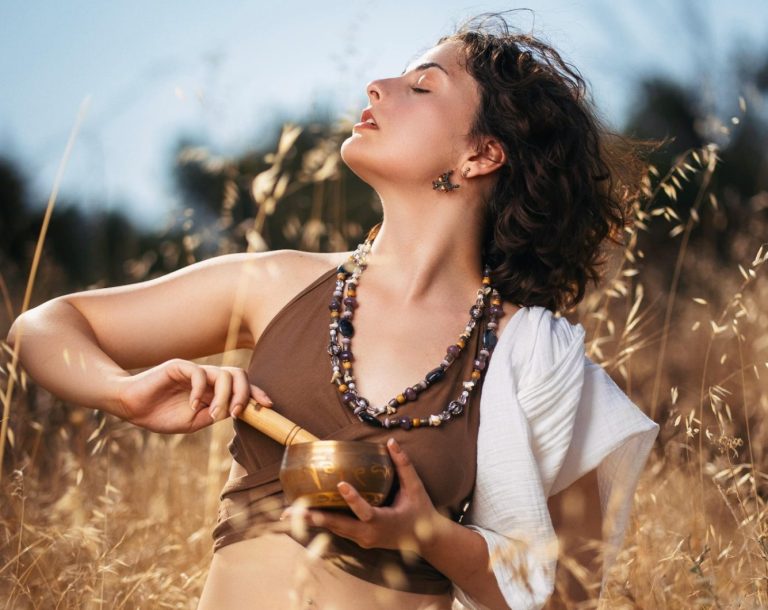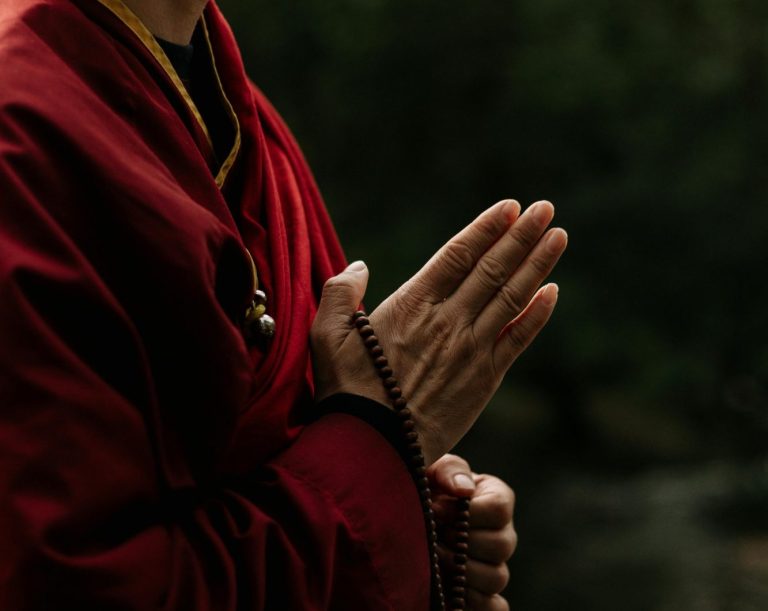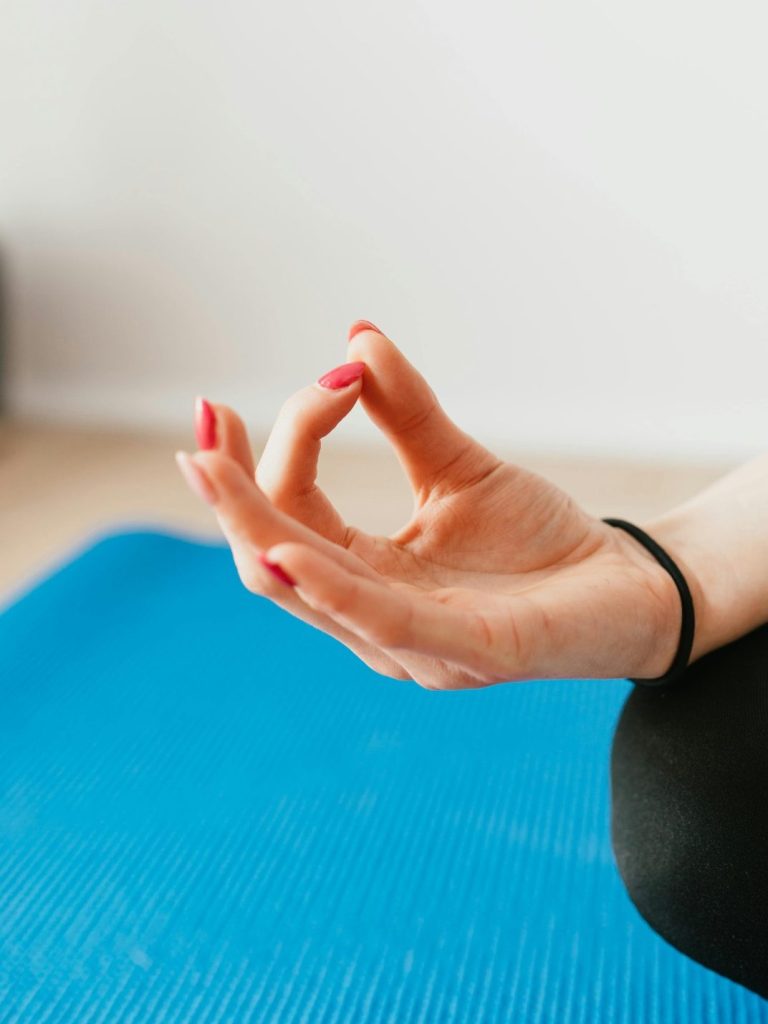I really wish more people understood this…
19th July 2025
What comes to your mind when you hear the word ‘meditation’?
Perhaps a monk in burgundy robes sitting cross legged? Or a room of women sitting around a circle of cards and crystals burning sage? Perhaps you think of religion. Certain parts of the world. Yoga. Hippies. Certain types of clothing.


And now I wonder how you feel when you hear the word ‘meditation’? Intrigued? Uncomfortable? Curious but from a distance? Enthusiastic? Sceptical?
Despite meditation becoming far more mainstream in the West in recent years, the word ‘meditation’ holds many particular connotations in people’s minds. Even typing ‘meditation’ on your phone keyboard will suggest an emoji of someone sitting cross legged with their hands on their knees, palms upwards. And here’s the thing - many of the connotations aren’t wrong.

There are truths to the stereotypes of meditation
Tibetan Buddhist monks do wear burgundy robes and sit in lotus position when sitting to meditate. There are many groups in which women meet and hold circle together with a shared interest in oracle cards, crystals and witchcraft and part of their meeting will be a meditation. Meditation does feature in many of the world’s religious histories and practices. Yoga is a meditative movement practice bringing the body and mind together. So there are some truths to many of the associations you may have in your mind about what meditation looks like, what type of person you have to be, or how you ‘should’ practice it.


The ‘meditation’ emoji on your phone keyboard depicts lotus position, or Padmasana, which is a position adopted by many for meditation, particularly in Buddhist, Hindu or Jain traditions, and is intended to provide a stable position for the body and aid your ability to focus the mind while meditating.


The position of the hands in the emoji - resting on the knees with palms upwards and thumb and index finger touching to form a circle while the other fingers are outstretched - is an example of a mudra - a gesture believed to influence energy flow within the body and promote healing or enhance spiritual development. Mudras are commonly used in spiritual practices in Buddhism and Hinduism as well as in yoga.
Mental wellbeing as a self-care luxury
We also live in a world that glorifies aesthetic self-care. You won’t have to look far to find a bougie wellness studio that offers relaxation classes, breathwork, meditation or similar. They’ll be advertised with soft photos of neutral aesthetics in an airy space, probably with plants, yoga mats or cushions and an instructor who looks the epitome of zen with closed eyes, maybe a hand on their chest, and classes have a luxury price point to match.
While I have no problem whatsoever with this type of class or studio - I’ve been to such places and had a wonderful experience - it runs the risk of promoting the idea that meditation and techniques to relax the mind or reduce stress must come at a premium. That they’re some sort of luxury that will only be accessible to some and not all, and that is what I have a problem with.
The very people such a studio attracts are those for whom self-care is a luxury they can afford and can prioritise in their life. And yet those in our society who have highest rates of mental health problems and tend to have very high levels of stress are those for whom this sort of luxury is not accessible - either due to finances, location or simply not having the time to go to a studio for an hour for themselves, not to mention a feeling of not ‘belonging’ in such an environment.
Yes, AND
So yes, many of the preconceptions you may have about meditation likely stem from truth. But it is also true that there is more to meditation than the bougie aesthetic, the Tibetan monks, witchy circles or lotus position. These can be ways to meditate and so, too, can sitting at your desk, walking the dog, laying on your bed in your pjs, listening to a YouTube guided meditation all be ways you can use meditation in your life. It is not a case of either/or, but yes, AND.
It is exactly this message that I want to emphasise at the heart of Mindfully Hannah - it does not matter who you are, where you live or come from, what your background or personality are or how much money you have - meditation can be for you, it’s simply a case of making it accessible to who you are.

Meditation is like exercise
The word ‘exercise’ is an umbrella term for activities that require physical effort, so this can include a huge range of practices from walking, swimming and cycling, to salsa dancing, ice hockey and weightlifting. Some exercise is done alone, some as part of a team; some requires specific equipment or a particular environment, some can be done at home. The term ‘exercise’ is broad and will mean different things to different people. Most people will have certain types of exercise they particularly enjoy or are good at, so do regularly to feel good and keep themselves fit. Many people also have types of exercise they know they don’t enjoy, for whatever reason, and so don’t partake in.

Accessibility to exercise will also vary between people. Physical limitations such as disabilities, injuries or medical conditions can render some forms of exercise impossible or dangerous. Some activities are location or season specific such as winter sports, and so are not accessible without travel. Many activities require financial commitments such as monthly memberships, or buying equipment, which are not available to all. Taking this into account, each individual has to find a form of exercise that is accessible to them, based on their preferences and life circumstances.

And so it is the same with meditation.
Imagine getting a group of 10 people together and taking them all on a 5K run - some will love it, some will hate it, some will be able to do it, others will spend most of the time walking, or may not even be able to participate at all. In the same way, putting 10 people in a room and guiding them in 30 minutes of breath meditation will not result in everyone finding it relaxing and wanting to repeat the experience.
Meditation that’s accessible for YOU
Meditation is a personal practice. The job of a teacher like myself is to show you different ways of meditating, so that you can find techniques that feel accessible to you - that suit your lifestyle, your background, your personality and your beliefs. So if you don’t want to contort yourself into lotus position, or feel totally uncomfortable about mudras, that's ok!
The long and the short of it is, the emoji isn’t all that meditation is - it’s so much more - and at Mindfully Hannah, that’s exactly what I want to show you.
